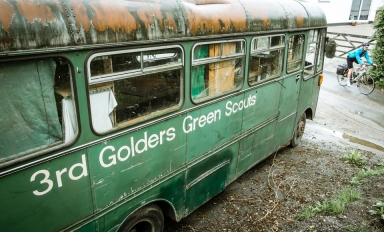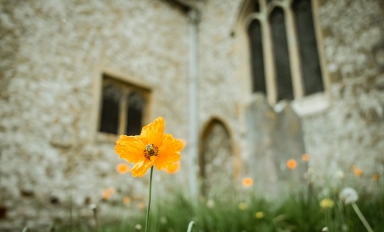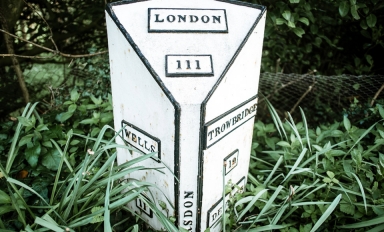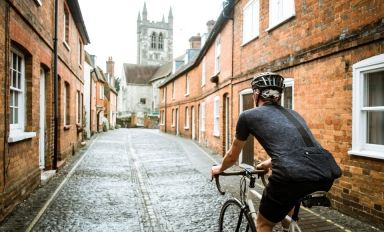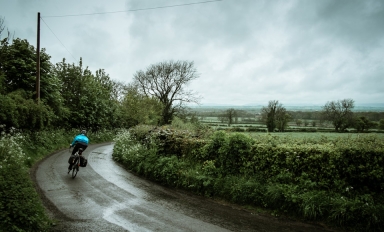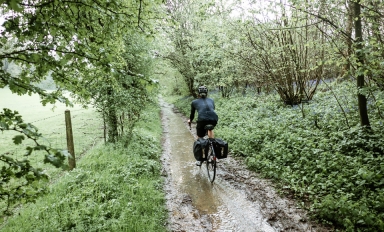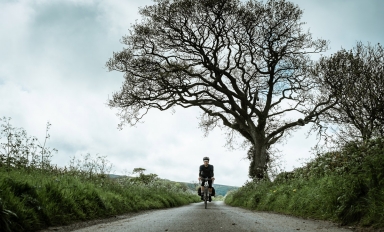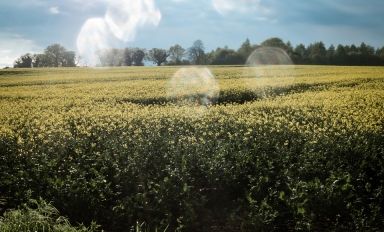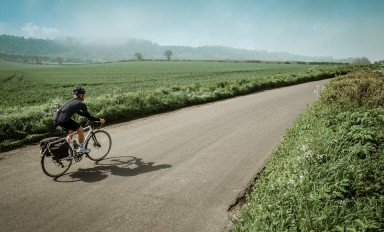“This is the record of a journey from London to the Quantock Hills – to Nether Stowey, Kilve, Crowcombe and West Bagborough, to the high point where the Taunton-Bridgwater road tops the hills and shows all Exmoor behind, all the Mendips before, and upon the left the sea, and Wales very far off.” Edward Thomas
Although he later found fame as a war poet, Edward Thomas was known as a critic, essayist and landscape writer when he wrote these words, at the age of 35, in 1913. They were published the following year as the opening lines of In Pursuit of Spring, an account of this poetic pilgrimage by bicycle to the hills where Samuel Taylor Coleridge lived, and where he wrote The Rime of the Ancient Mariner.
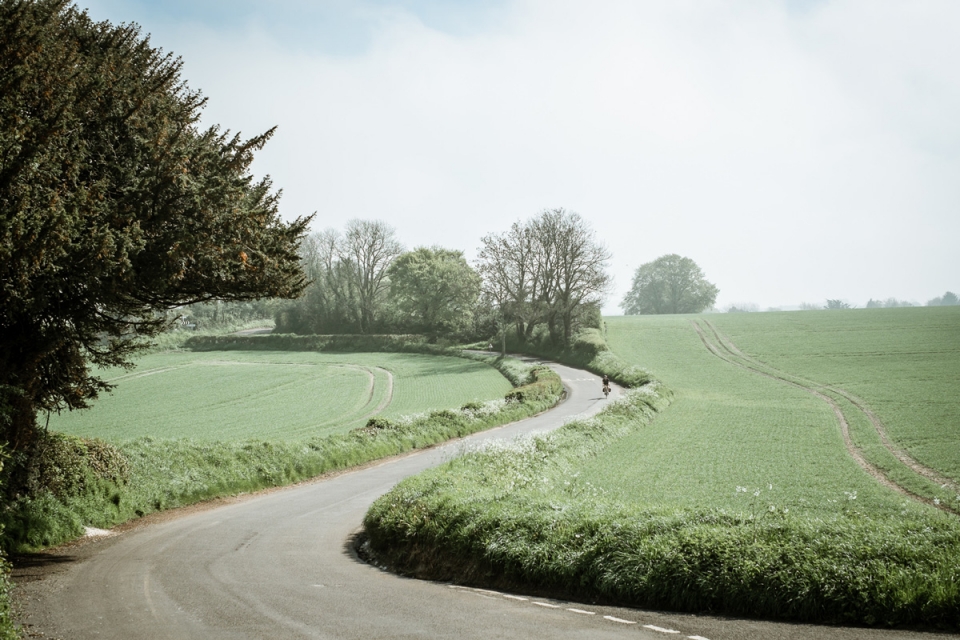
From the B1866 store in central London we rode to Thomas’s house in Clapham, which is marked by a blue plaque, and then struck out to the south west. From the start the journey was marked by change: the changing landscapes around Morden as the London suburbs gave way, as they did in Thomas’s time, to patchy fields and then proper countryside; the transformation in the roads from quiet cart tracks hollowed through the hills of southern England into tarmaced roads, and in some places busy, hostile dual carriageways. And by the changing seasons we could see in the hedgerows – the celandines, cowslips, blackthorn and bluebells that he describes so eloquently as battling against the receding Winter, as nature and resurgent life regain the upper hand for another year.
Thomas took a week to make his journey, on a single-speed bicycle with bad brakes. We were equipped with multiple gears, panniers and disc brake-equipped touring bikes, and decided to do it in three days.
After taking main roads out of London, we sought out the byways of Surrey – hidden lanes, bridleways and muddy tracks that run parallel to the main concrete arteries, which felt closer to what we believed Thomas himself would have experienced. That first night we had planned to reach Dunbridge in the Test Valley in Hampshire, and stay at the Mill Arms, an inn that had turned Thomas away when he’d been looking for a bed for
the night. Luckily we had reserved a room on the internet; and so, with red sun setting behind bare trees and evening mist descending on fields of sheep, we dismounted from our bikes for well-earned showers, dinner and pints of local ale.
We awoke the next morning for another 100-mile day, which started under the ridge of Dean Hill in Hampshire and took us through Salisbury, past the military on manoeuvre on the chalky plateau of Salisbury Plain, and looping around Trowbridge. Through picturesque villages and past venerable stately homes we rode, before conquering one more range of hills – riding steeply up the easterly ridge of the Mendips, past the castle ruins at Farleigh Hungerford. There on the deserted uplands we had the hedge-lined lanes entirely to ourselves, save for a friendly local cyclist and a man walking his dog. With most of the day’s climbing coming in the last 20 miles, it felt good to speed down in the gathering dusk to Shepton Mallet, and another inn that would be our resting place for the night.
The final day would be the shortest, but also the wettest: overnight, the departing Winter had sent cold winds and rainclouds to Somerset and we set off down the old road to Wells to the sound of soft rain drops and the swish of tyres on wet Tarmac. From Wells to Glastonbury the rain worsened, and became torrential as we climbed up to the ridge of the Polden Hills, where the views of the Somerset Levels was obscured by mist. But with each pedal stroke into the westerly wind we left the bad weather behind, and by Bridgwater the sun was cautiously peeking out again.
"Through picturesque villages and past venerable stately homes we rode, before conquering one more range of hills – riding steeply up the easterly ridge of the Mendips, past the castle ruins at Farleigh Hungerford..."

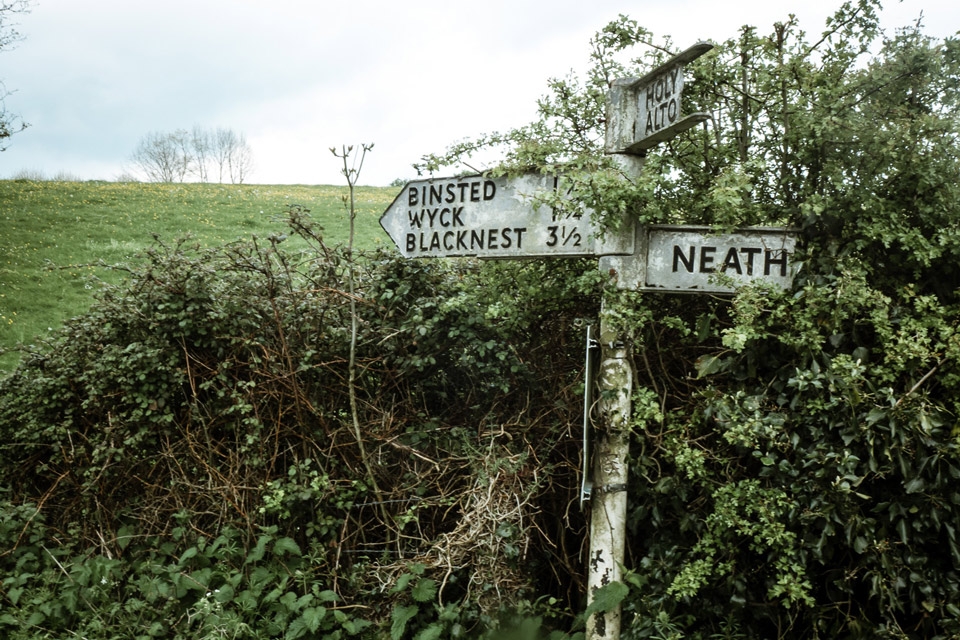
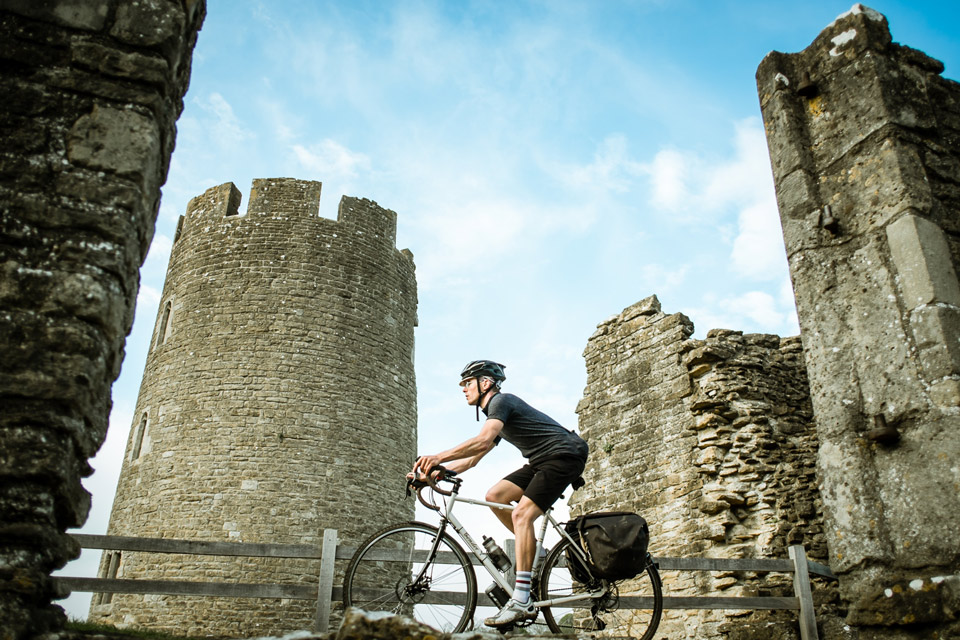
At Bridgwater we refuelled and contemplated the challenge ahead. Edward Thomas put it:
“Green corn, rosy ploughland, sheep-fed pasture, and a few elms in the partitions; and behind it, the dim Quantocks.”
There they sat, darkly on the horizon under patches of sun and cloud; our route took us around their northern edge almost to the sea, with views of the Bristol Channel and the blue hills of Wales, through Nether Stowey where Coleridge lived and then up, on steep lanes in dappled shade and sun to West Bagborough, where the final climb of the route would also prove the hardest.
Cothelstone Hill was where Thomas ended his journey, where he proclaimed that he had found Winter’s Grave. After a long steep climb to that highpoint of the Taunton-Bridgwater road we stopped, took some pictures and read the final lines of his book. Satisfied, we descended to Taunton to take the train back home, where 21st-century civilisation awaited. Was this how Thomas returned? It’s a question he leaves ambiguously unanswered in the book, saying only that:
“I was confident I could ride home again and find Spring all along the road.”
One of the pleasures of Thomas’s book is its descriptions of a lost world – one almost without motorcars, in which some of the villagers he met belonged to a peasantry already ancient in the 19th century. At points in the ride – on bridleways, footpaths through the forests or in the Quantocks themselves, where some of the muddy red lanes seemed more marked by horse hooves than car tyres – it was almost possible to think that his world still existed. But in reality it disappeared not long after he captured it on the page: in 1914, the Great War descended on Europe and swept everything ancient away.

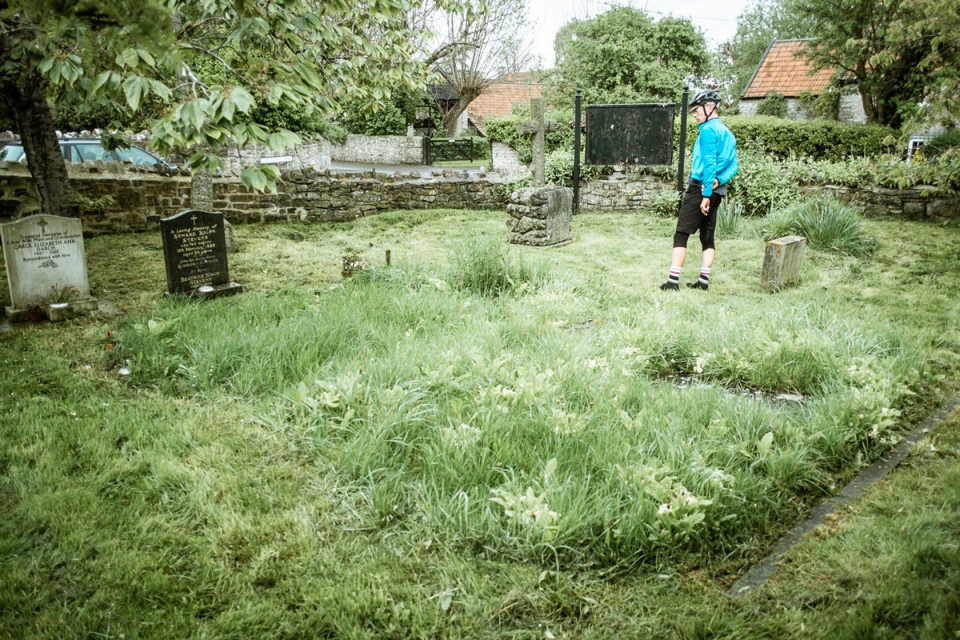
Thomas did not survive either. He enlisted in 1915 and in 1917 was killed in action, hit by a blast wave from a shell that stopped his heart as he stood from the trenches to light his beloved pipe.
Always a pacifist, he nevertheless gave his life for the land he loved.
